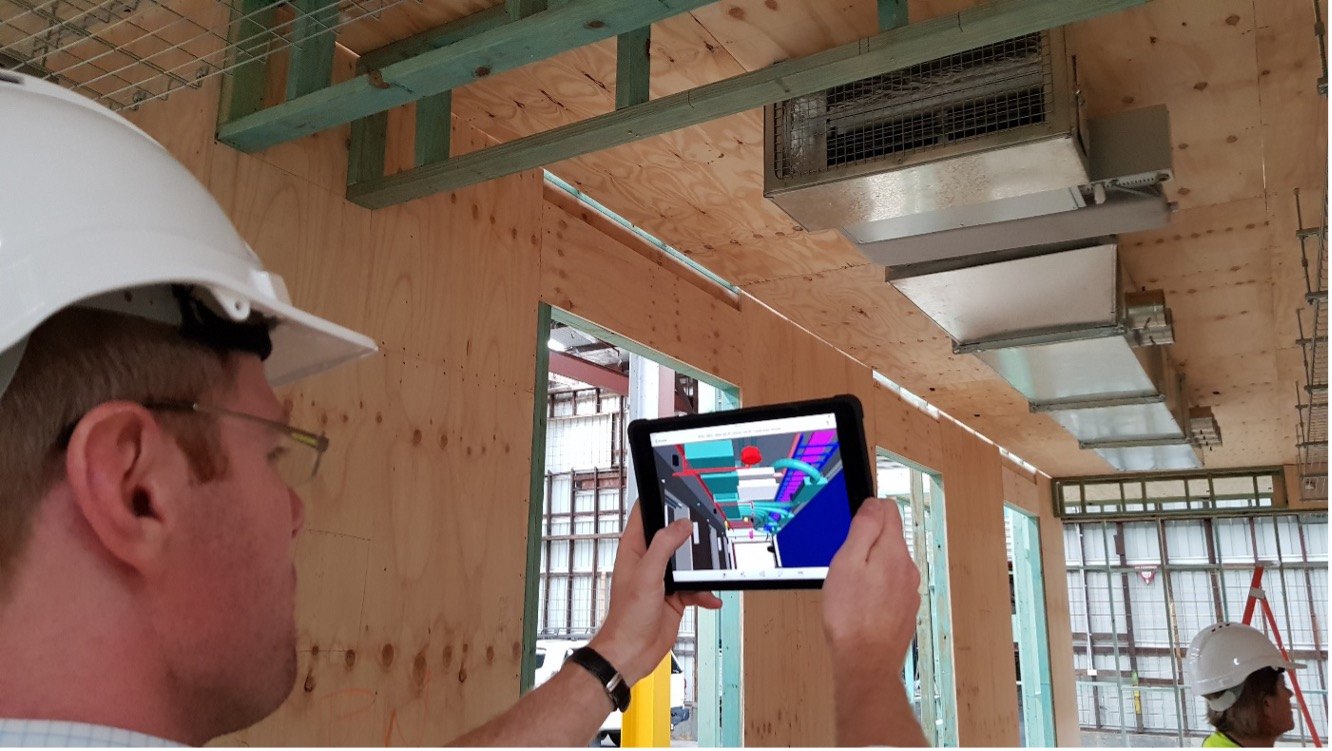Contributor: Ciaran Doyle, Regional Lead (North America) ‑ Digital Engineering, DBM Vircon
Just because you can doesn’t mean you should.

Many examples exist in which a potentially useful tool, concept or skill becomes a liability simply because it was misapplied. In a famous pop culture example, take the continued regeneration of dinosaurs from the Jurassic Park/Jurassic World universe. In the world of the film franchise, the science and technology necessary to bring back prehistoric creatures exist, but the narrative has yet to adequately explain why genetic engineers ever thought this was a good idea.
Similarly – albeit far less hyperbolically – the decision to use technology in the built environment should be held to the same questions of motive and use value that we might hope the Jurassic Park/World characters would tackle.
Grounding the idea further in reality, project stakeholders must establish a purpose when using Building Information Models (BIM) to maximize return on investment and avoid simply using technology for technology’s sake. The National Building Specification (NBS) 10th National BIM Report (U.K.) shows BIM technology use has increased by over 30% in the last decade, so what is it and how can Owners benefit from employing it with purpose?
A Building Information Model (BIM) is a technology-enabled deliverable where teams can generate and manage information about a construction project, allowing a Virtual Design & Construction (VDC) process to come to life. Per the DBIA Position Statement, VDC is a people-first approach – followed by process and technology – that optimizes the design and construction process while providing greater certainty of the outcome. Virtually designing and simulating a project involves the creation of a 3D model that represents all aspects of the building before physical construction, eliminating many of the inefficiencies and issues that arise during the construction process.
BIM is often associated with design and pre-construction, but it can be used at every phase of the project lifecycle, including operating and maintaining the asset after building is complete. By leveraging digital processes to support decision-making, BIM enables a collaborative way of working that benefits Owners from design to operations.
Several countries are implementing BIM on government-funded projects, with the U.K. and some parts of Australia mandating its use to varying degrees at governmental levels. The countries adopting these digital workflows recognize the benefits of procurement of government infrastructure – including reduced costs and increased project quality over the asset’s lifetime. The National BIM Standard-United States (NBIMS-US) was created to define standard data specification and information structures for BIM uses in the U.S. and is the leading standard in the country. Above these independent country standards sits the ISO19650 suite, an international standard for managing information over the lifecycle of a built asset using BIM. This shows that BIM can help asset owners in numerous ways, even at an internationally recognized level.
Maximizing Efficiency During Design-Build – International Perspectives
BIM provides valuable insights into a project during pre-construction, using simulations and 3D visualizations to experience the planned result. By creating a digital representation of the built asset before it is created, BIM provides a platform for more stakeholders to become engaged earlier, understand design intent, appreciate construction methodology and overcome differences in understanding – all before a shovel hits the ground.
Several advancements are becoming prevalent, such as fully interactive gaming environments that blend complex software operation and intuitive gaming operation. By improving the planning stages and facilitating a more interactive and “real world” feel to construction information, BIM streamlines design and construction work so projects run on a shorter lifecycle with greater speed and efficiency.
According to a New Zealand study, 57% of designers who use BIM say the technology directly reduces the number of errors and omissions during the design phase. With early design coordination and rectification, team members can make changes before material arrives on site, saving time and money on costly rework and schedule delays.
At its core, BIM enables integrated team environments fundamental to design-build projects. Because each project stakeholder has access to the same data – typically by way of a federated model (single source of truth for 3D information) – from the beginning of the project, it creates a collaborative team environment, preventing duplicate work and reducing design inefficiencies. Collaborating from the start through shared information helps to align with timely ESG goals and drives down costs. This reduction in inefficient delivery is also a core notion of what adopting a design-build project execution can bring to your project – a report from the Charles Pankow Foundation indicates some delivery speed increases of up to 102%.
With BIM, 3D model exports can provide accurate and reliable cost estimates for materials, labor and site planning and logistics requirements. Everything from temporary fencing to cranes can be integrated into a BIM environment and scheduled to see resource loading, cash flow and mobilization periods. Virtual construction planning can visualize complex construction processes and identify potential issues before they occur, improving site safety.
Capturing Information Throughout the Project Lifecycle
Owners can enjoy more benefits than previously mentioned. In design-build with BIM, construction expertise and means and methods can be embedded into design to help eradicate the value engineering churn typical of design-bid-build projects. It helps keep projects on schedule and on budget by leveraging design and construction discipline expertise at the right time, without the aesthetic, size or functionality compromises that are a necessary evil of the value engineering process.
BIM also allows Owners to capture and present real-time information across the project lifecycle using virtual models such as digital twins to represent the original building. Unlike traditional spreadsheets, which are prone to human error, BIM automates data generation from the model and can store external information capture devices like IoT sensors to deliver valuable information that can be used for ongoing asset management, operation, maintenance and decision-making. One Australian study estimated that by 2022, over 75% of large industrial companies implementing Internet of Things solutions will have also adopted Digital Twin technology. Even more promising for emerging technology is a Grand View research report placing the compound annual growth rate of digital twins in North America at 35.4% through 2030.
BIM’s real-time asset performance monitoring creates more efficient and economical asset management processes. Owners can optimize the building’s systems and performance to improve comfort and safety while minimizing environmental impacts and running costs. When the asset completes its lifecycle, BIM facilitates the decommissioning process by documenting all materials, recyclables and any hazardous substances. A recent study from New Zealand-based Branz and Building and Construction Productivity Partnership revealed that almost two-thirds of asset owners using BIM report a higher return on their investment, with returns correlating strongly to the level of engagement with BIM technology.
Enable Better Communication and Collaboration
Communication is critical to successful, on-time delivery when working on large-scale design-build projects with many stakeholders. BIM facilitates the flow of accurate and up-to-date information, including models, estimates and design notes – ensuring project stakeholders have access to live data stored in one place.
With everyone working from a single source of truth, the BIM ecosystem also allows teams to instantly share designs, modify documentation and coordinate planning even when not on-site – promoting seamless collaboration across disciplines within the project. This prevents unnecessary meetings and bottlenecks that slow down workflow and boosts productivity on the project.

In Conclusion: BIM adoption in Design-Build Offers Key Benefits to Owners
The construction industry has rapidly adopted BIM/VDC to manage projects throughout the asset lifecycle, from design and construction to operation and maintenance. Still, there is more benefit on the table. BIM can deliver a range of benefits to all project stakeholders, leading to better outcomes for the asset. However, value can be lost in all project stages without an effective management framework for the volume of digital information on a project. This is where design-build steps in to provide this framework. The fastest-growing and most popular method used to deliver construction projects in America provides an integrated delivery method that is truly complemented by BIM processes.
Real-time data provides deeper insights into an asset, driving workflow and operational efficiencies while reducing costs and the risk of human error. The fast, accurate transfer of information enables teams to work collaboratively, contributing to the overall success of the project and a higher-quality build. By establishing a clear purpose and plan for implementing BIM, technology becomes a valuable tool for project teams. It avoids the Jurassic Park/World can-but-should pitfall of genetically engineered dinosaurs inexplicably running amok seven films later. Perhaps with BIM, you can and you should, but it’s important to clearly demonstrate how.

